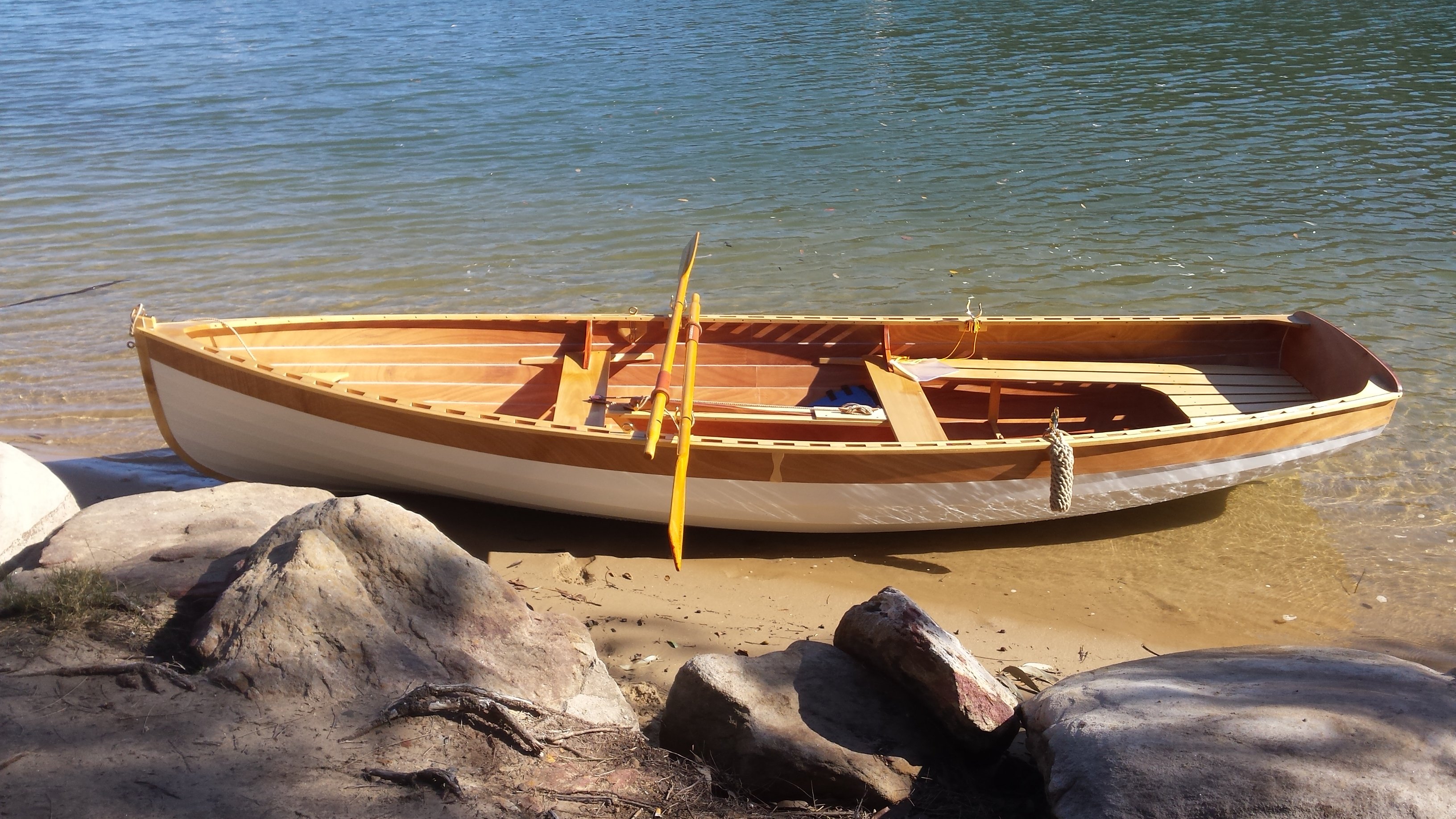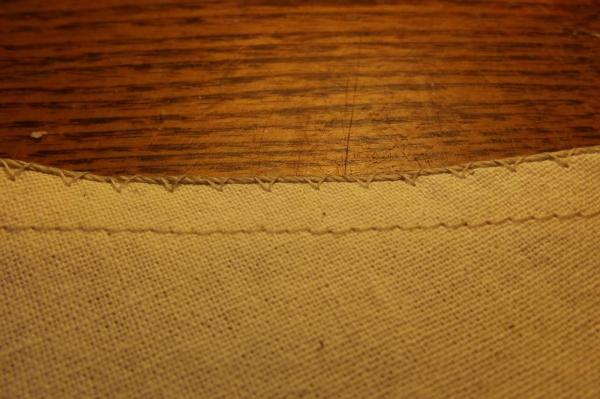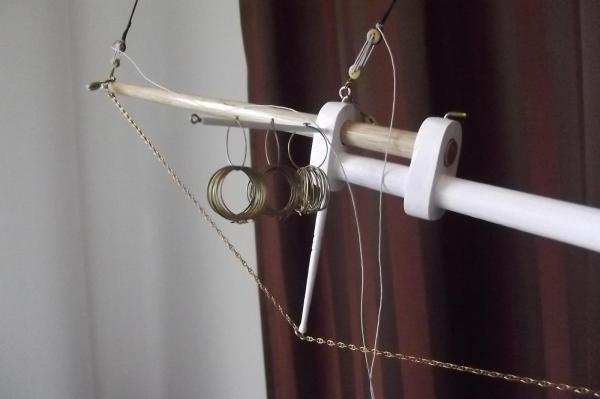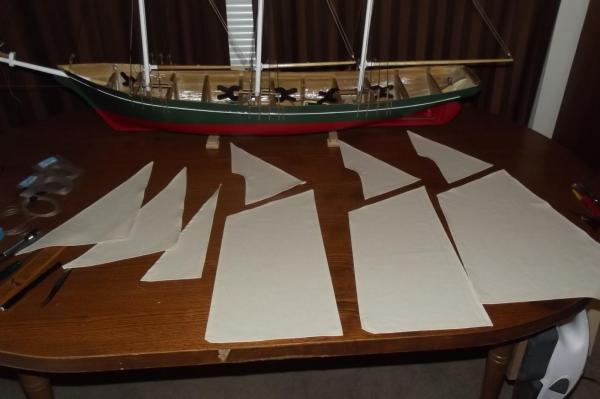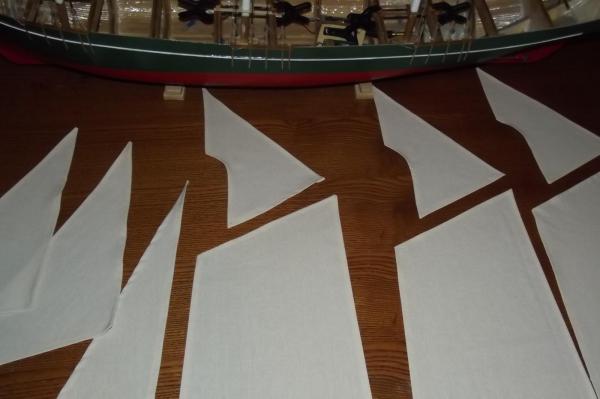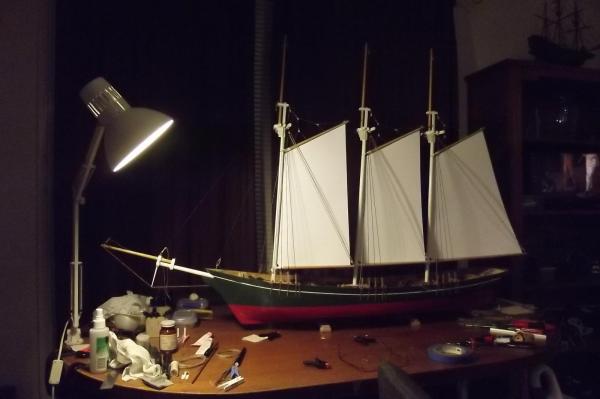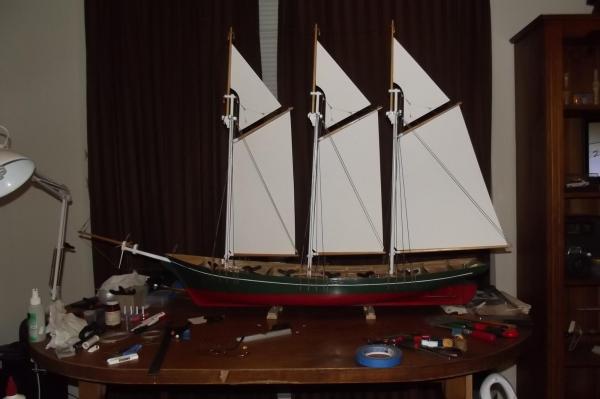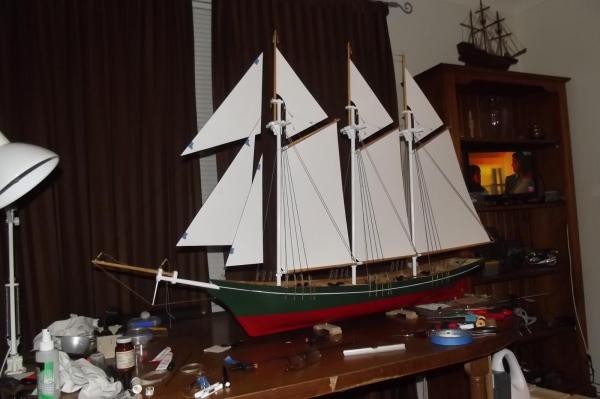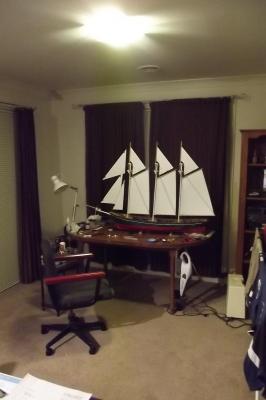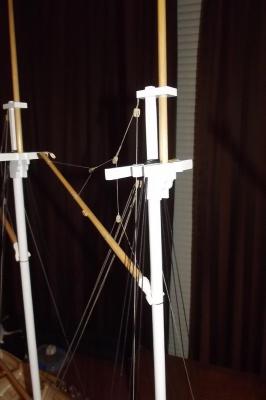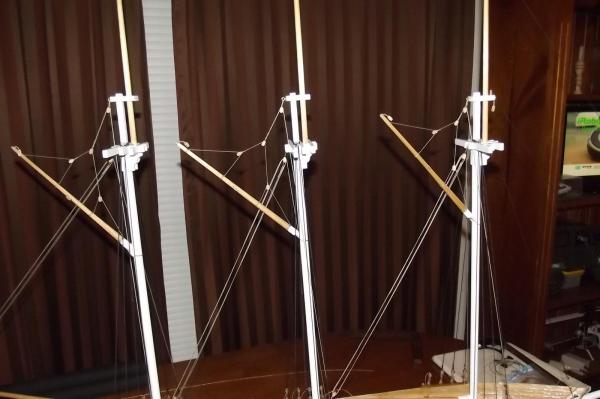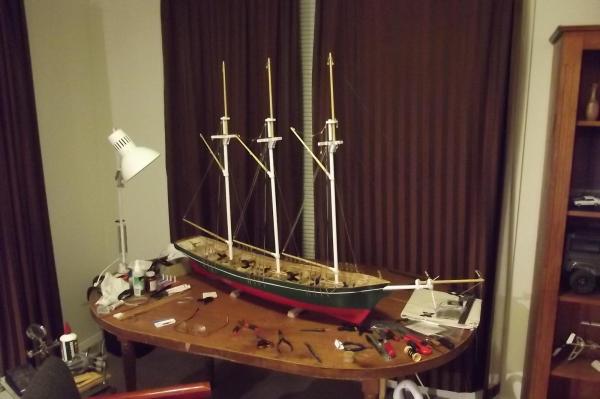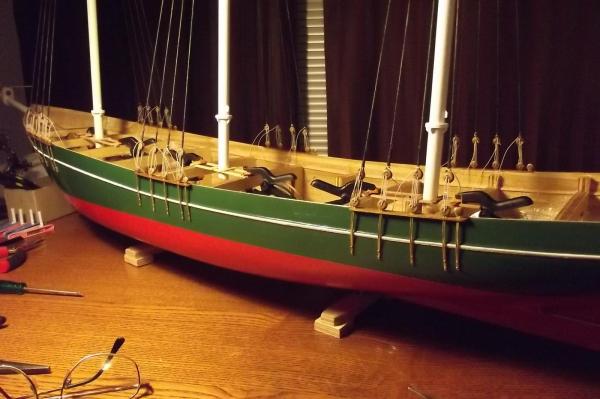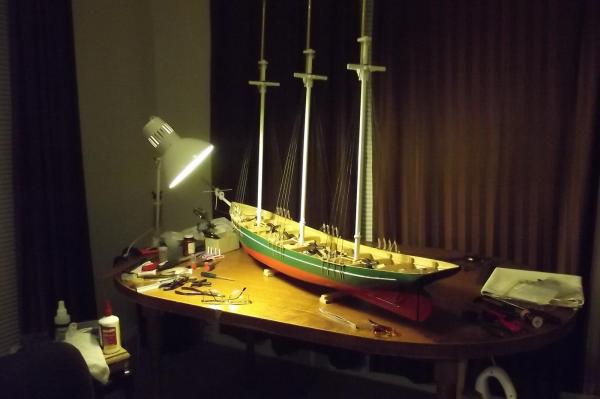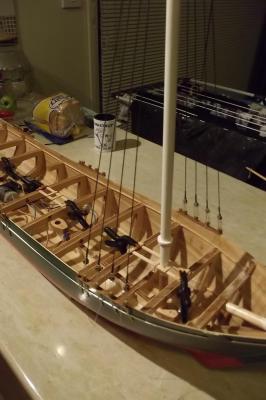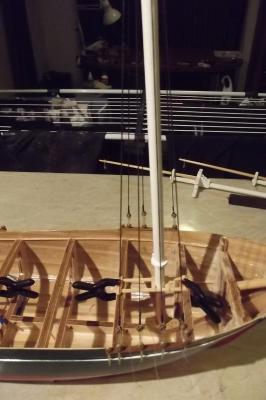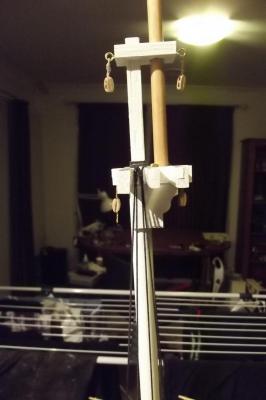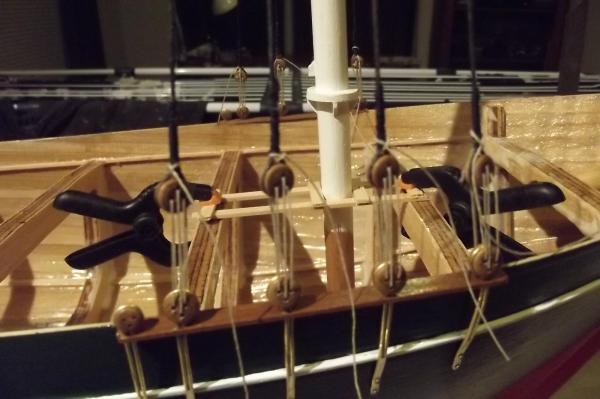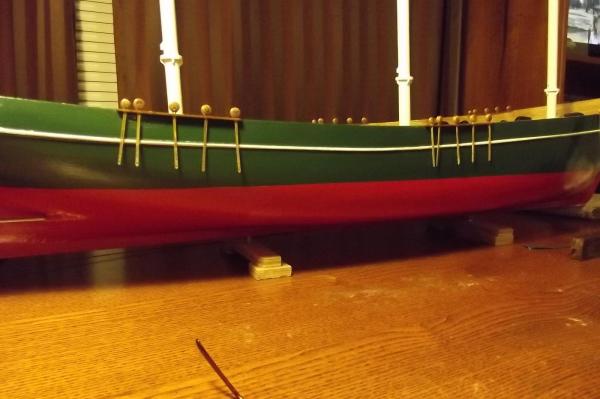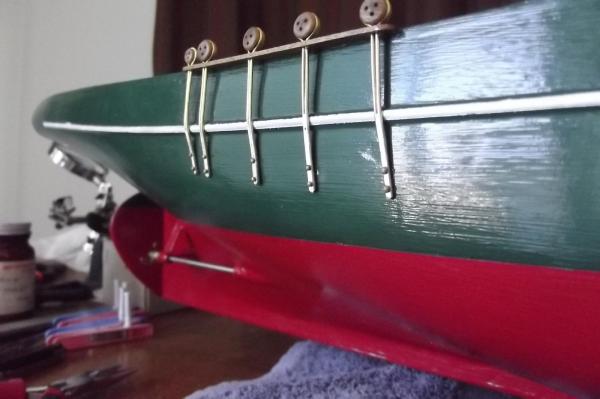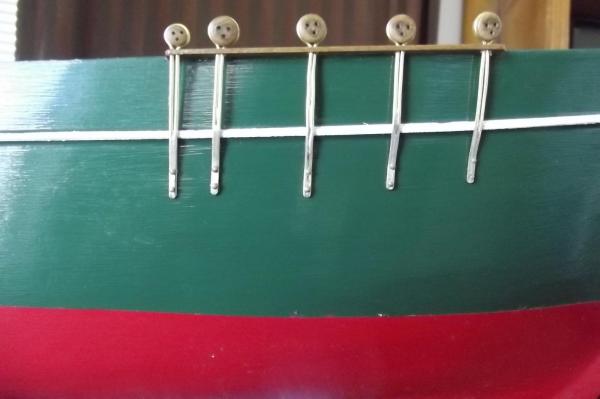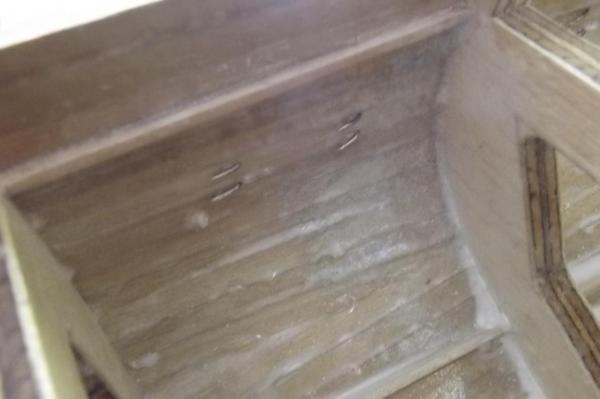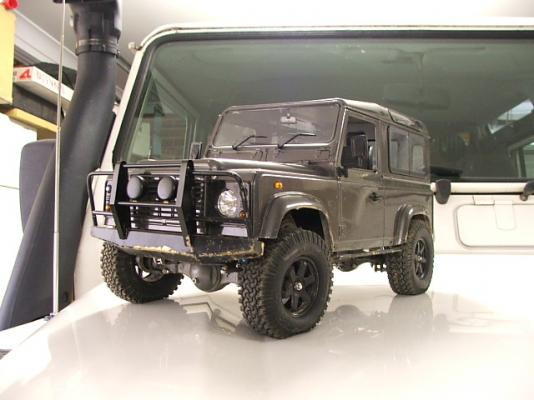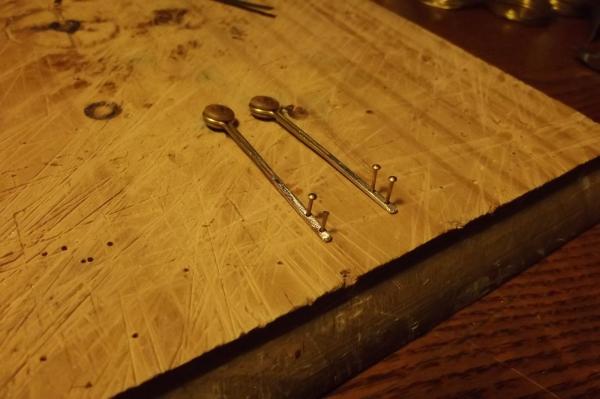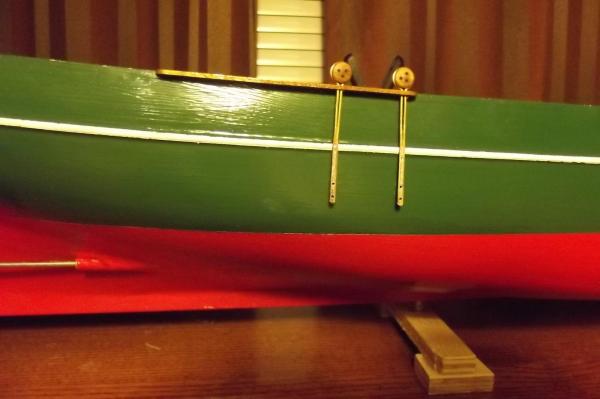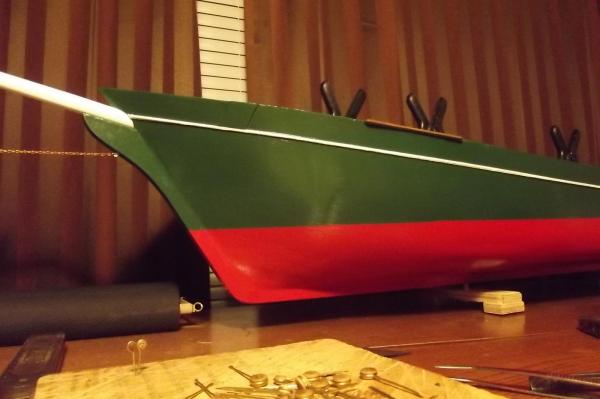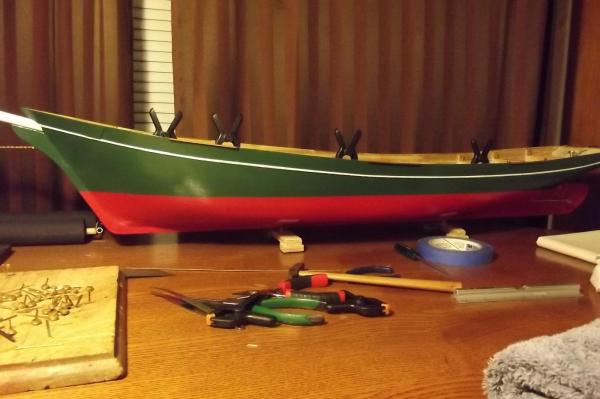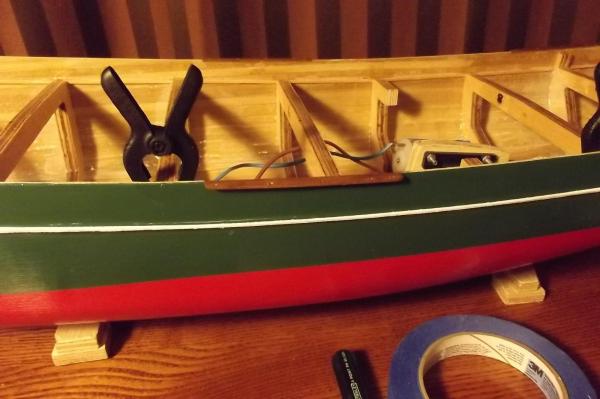-
Posts
1,285 -
Joined
-
Last visited
Content Type
Profiles
Forums
Gallery
Events
Everything posted by Bedford
-
Very interesting Jerry. I did try to find suplex but no-one knew what it was and online I kept comming up with something else from memory. I therefore went back to the cotton cloth idea. It should be supple enough to gather when I hall down the sails ( I hope ) She may not sail very often either but I have kept the sail templates so I can always make her a new set should the need arise. I will be hand stitching all and sundry to ensure nothing goes astray. Steve
-
I was dreading the hand sewing that would be required to attach the bolt ropes to the sails so I thought about it and decided it was worth trying to do them on the machine with a zig zag stitch. I tried and failed a few times on scrap sail fabric, the main problem was that the machine process seems to stretch the fabric a little while the rope does not stretch, result, puckering right along the edge of the sail. After some thought I decided to try a wider zig zag stitch that would reach completely across the rope without stitching through it. This worked beautifully and because the zig zag just encases the bolt rope I can just draw it through the stitching until the sail pucker is gone. It worked a treat. Unfortunately I have ran out of cotton with two tops'ls to go and I have yet to stitch the guides for the lazy jacks into the sails. I figure I will pin a cord to the sail where I want the guides to be and stitch it to the sail with a tighter zig zag stitch. Then I can just pull a small amount through and create a loop at intervals up the sails for the lazy jacks to go through. Again I need more cotton to do this so the sail maker has gone home for the day. I have also made the mast hoops. I used up all the 0.5mm brass wire I had and got 16 hoops per mast which should put one every 22mm. I need more wire for the tops'ls. I made the hoops by wrapping untempered wire around a steel bar of the correct diameter and then using pliers I twisted the ends of the wire together through 180 degrees and then cut the tails about 1.5mm outside the twist to form two interlocking hooks.
-
I have made the sail templates to make sure it all fits, next job is to make the sails and see if I can get them to work the way I want them to. Even though the sails are just cardboard it looks magnificent, I think it is going to look brilliant under sail. I am hoping this pic will give a good idea of it's presence in a room
-
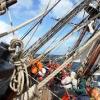
Batavia by *Hans* - FINISHED
Bedford replied to *Hans*'s topic in - Build logs for subjects built 1501 - 1750
Don't forget the soft ropes with the frayed ends that dangled in the water so they could pull them up and wash their backsides when they finished. -
That's the joy of scratch building isn't it? Nicely done.
- 420 replies
-
Elementary my dear Watson/Watsonette. I have to get all the running rigging set up and working before I can close the deck, hence the standing rigging as it holds the masts in their correct location and provides anchorage for the stays'ls. Once all is set up and working I will unship the masts and rigging and finish the deck and deck furniture then re-fit the rest. It isn't a big deal to loose the lanyards and remove it all. Back to the chain plates, the white line is level with the deck so when you think about it they aren't that long really, just over 2mtrs at full scale with only half of that below deck level.
-
Robbyn, going off the plan I am working from they are a tad short. I made them that way to keep the holes out of the water as much as possible. Not that the few mm I cut off will make much difference. I am guessing they were long because the later ships really pushed it and they needed to be as strong as possible so the further down the hull they reach the better.
-

Batavia by *Hans* - FINISHED
Bedford replied to *Hans*'s topic in - Build logs for subjects built 1501 - 1750
The Batavia may link us more than you realise. Among the punishment handed out to the mutineers was the sentence of being put ashore on mainland Australia and left here. This happened to a few of the mutineers so they were the first penal colonists of this country, long before the English started sending there criminals here. It is said that when the English colonists reached the central western coast (around what is now Geraldton) they encountered a few blonde aboriginals. Descendants no doubt. On a side note, although it would have been very hard going for the early convict settlers I think we got the better deal in the long run. Sun, sand, good weather, gold. Thanks England -
Chain plates To get the correct angle on the chain plates I fit the masts at the correct angle and run a line of cord where the shroud will go, I centre it over the dead eye and continue down onto the hull. This shows where the chain plate needs to attach in order to get the straight line with the shroud. In this case I then drilled two 1mm holes through the hull using the chain plate holes as the template. I then used a magnet to weed out the brass plated steel nails from my nail tin and selected 60 long brass nails which were then annealed to soften them for bending. Once all that had ben done I mixed a small amount of epoxy and put a blob (technical term) on each hole on the inside of the hull for one station at a time, ie starboard mizzen chain plates first. I then pushed that through the hull with my finger so I had a small sphere of epoxy on the outside of the hull at each hole. This ensured the hole was filled with epoxy to ensure water could not get into the wood. Then I place the nails through one chain plate and while pressing them firmly against the hull with my thumb I used pliers to bend the inboard end of the nail over to form a rudimentary rivet. When all are done I will apply some thickened epoxy over each of these to ensure it won't move or foul anything and it will be water tight.
-
I tried to come up with all kinds of fancy ways of doing them, partially because I didn't trust the solder to hold them in the way I have ended up going. But I used 40/60 solder instead of the softer 60/40 and they seem to be quite strong. So I went with the K.I.S.S. method you see in the pics. I should have realised the 40/60 would be strong enough after I made the bull bar pictured for my RC Land Rover, It is all brass and 40/60 solder and I can pick the vehicle up by the bullbar and it weighs 3.5Kg!
-
It's been a while, no reasons, no excuses, I just haven't felt like doing anything with her..... I am in the process of making chain plates but had to get more brass to do it so while waiting I fitted the shroud tables and realised that she looked a bit unfinished in the hull. Then I realised she needed a stripe.
About us
Modelshipworld - Advancing Ship Modeling through Research
SSL Secured
Your security is important for us so this Website is SSL-Secured
NRG Mailing Address
Nautical Research Guild
237 South Lincoln Street
Westmont IL, 60559-1917
Model Ship World ® and the MSW logo are Registered Trademarks, and belong to the Nautical Research Guild (United States Patent and Trademark Office: No. 6,929,264 & No. 6,929,274, registered Dec. 20, 2022)
Helpful Links
About the NRG
If you enjoy building ship models that are historically accurate as well as beautiful, then The Nautical Research Guild (NRG) is just right for you.
The Guild is a non-profit educational organization whose mission is to “Advance Ship Modeling Through Research”. We provide support to our members in their efforts to raise the quality of their model ships.
The Nautical Research Guild has published our world-renowned quarterly magazine, The Nautical Research Journal, since 1955. The pages of the Journal are full of articles by accomplished ship modelers who show you how they create those exquisite details on their models, and by maritime historians who show you the correct details to build. The Journal is available in both print and digital editions. Go to the NRG web site (www.thenrg.org) to download a complimentary digital copy of the Journal. The NRG also publishes plan sets, books and compilations of back issues of the Journal and the former Ships in Scale and Model Ship Builder magazines.

